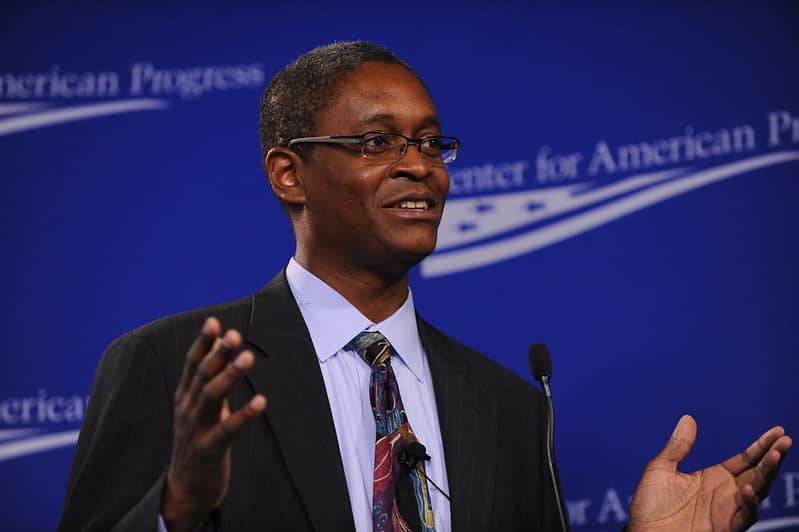Fed Could Cut As Soon As May: Standard Chartered
- Written by: Sam Coventry

Above: File image of Raphael Bostic. Image: Center for American Progress, reproduced under CC conditions.
Steve Englander, an economist at Standard Chartered, suggests that Fed Chair Powell may be willing to accept dissents in order to facilitate timely interest rate cuts at the Federal Reserve.
"12 June FOMC is the most likely date for a cut, but we see a slim chance that 1 May will be live," says Englander in a new research note.
The Powell-led Federal Reserve has been known for its cautious approach, preferring unanimity over quick decisions amidst a divided FOMC.
"We now think Fed Chair Powell will accept dissents in order to push through timely cuts," says Englander.
He believes Powell's determination to initiate rate cuts in the second quarter could have significant market implications, potentially leading investors to view three cuts as a floor rather than a ceiling.
Standard Chartered research shows this could result in further declines in long-term yields and a softening of the U.S. Dollar, as the Fed is perceived to be cutting rates more aggressively than other central banks.
At its March update, the Fed said it was content to watch incoming data, but members of the FOMC envisaged a slightly higher path for the interest rate outlook.
Powell is aware of the potential for division amongst the FOMC's voters. Federal Reserve Bank of Atlanta President Raphael Bostic this week reiterated his expectation for one interest-rate cut this year, adding the central bank can afford to be patient as long as the economy holds up.
“I have an outlook for how the economy’s going to perform,” Bostic said Monday during a moderated conversation hosted by the University of Cincinnati’s Real Estate Center in Ohio. “If it does that, then I think we can afford to be patient.”
While Bostic has emphasised the importance of incoming data, his divergence from the median 2024 fed funds dot in the Summary of Economic Projections (SEP) is noteworthy.
Englander interprets Powell's recent endorsement of dissents as an attempt to mitigate the credibility consequences of a potential split vote, particularly in light of Bostic's comments.
Englander also suggests that comments from other FOMC participants indicate a range of rate-cutting projections, with some members potentially seeing zero, one, or two cuts this year.
While Powell may have eight votes for easing, he may prefer to avoid an 8-4 vote split on the first cut of the cycle. Instead, he may aim to sway a couple of votes into the cutting camp over the coming months, particularly if inflation outcomes support such a move.
The Summary of Economic Projections (SEP) suggests that PCE inflation of 2.5-2.6% Q4/Q4 would justify three policy rate cuts in 2024.
Englander says inflation in this range would justify a cut by the second quarter, potentially making June the most likely time for the first cut.
However, he also notes the possibility of a more 'live' May meeting if March core PCE falls to around 2.5-2.6%.



